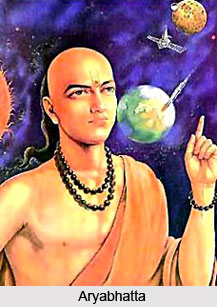 Science in the ancient India prospered to a great extent and several scientific thinkers of the period refer to the work of their predecessors, thereby suggesting the assimilation of earlier indigenous as well as heterogeneous influences in their own thinking. Varahamihira, for example, in his Panchasiddhantika mentions five earlier Siddhantas of which Romaka and Paulisa are believed to have been derived from the Hellenistic world. Similarly, rasavidya or alchemy which gradually came to be associated with esoteric tantric practices may have grown out of contacts with southern China. The attribution of male and female principles to mercury and sulphur respectively is common to both the areas.
Science in the ancient India prospered to a great extent and several scientific thinkers of the period refer to the work of their predecessors, thereby suggesting the assimilation of earlier indigenous as well as heterogeneous influences in their own thinking. Varahamihira, for example, in his Panchasiddhantika mentions five earlier Siddhantas of which Romaka and Paulisa are believed to have been derived from the Hellenistic world. Similarly, rasavidya or alchemy which gradually came to be associated with esoteric tantric practices may have grown out of contacts with southern China. The attribution of male and female principles to mercury and sulphur respectively is common to both the areas.
However, indigenous scientific thinking which originated from practical necessities as early as the Vedic period reached its most innovative phase during this time. The most remarkable works of the period are perhaps those by Aryabhata, to whom is attributed a series of important contributions. He developed the theory that the earth is a sphere and rotates on its axis, and provided a rational explanation for eclipses. But Aryabhata`s reputation rested in the main on giving Mathematics a new dimension as a discipline. He was the innovator of the value of n correct to four places of decimal`. He also developed an alphabetical system for expressing numbers on the decimal place value model. Some of the philosophical systems too were disposed towards science. The Nyaya-Vaisesika system which explained the formation of gross bodies from atoms through dyads (dvyanuka) or triads (tryanuka) or elaborated the `notion of impetus,` must have been fed by the cross-currents of the contemporary scientific enquiries.
The recognition of Indian science came early through translations of a variety of works in the Arabic world and their transmission to the west. But some of the brilliant discoveries of Aryabhata 1 were rejected and even condemned by his illustrious successors like Varahamihira and Brahmagupta.
Another marked innovation of Aryabhata as the method of solving a Quadratic Equation. To define this process, he said to multiply the sum of the interest on the principal and the interest on this interest by the time and by the principal. Then the square of half the principal is added to this result. Then the square root of this is taken. After that, the rule permits to subtract half the principal and divide the remainder by the time. The result will be the interest on the principal. Moreover, his Concept of Pulveriser is another glory of science of this period. He was also reckoned for the use of Zero in Algebra.
In addition to these, the science of this period includes physiology formation of the human body. It says that in the first month (of conception), the sixth dhatu (i.e. the soul), being invested with the five elements and remains in a liquid form. In the second month, it is converted into a ball of flesh; in the third, it is invested with limbs and the organs of sense.
The unborn soul takes, in the third month, from ether, lightness, subtleness and audibleness, the organ of hearing and strength; from air the organ of touch, the power of exerting, the movement of limbs an hardness; from fire, the organ of seeing (eye), the digestive power, heat, form and beauty; from water, the organ of taste (tongue), watery substance, coolness, tenderness and liquidity; from earth the organ of smelling (the nose), the power of smelling; heaviness and corporal frame. Thereafter the limbs attain to firmness in the fourth month, and blood is engendered in the fifth. In the sixth, originate strength, colour, nails and hairs. Moreover, in the seventh, it is invested with mental faculties, consciousness, arteries and nerves. In the eighth, skin and flesh become hardened, and the embryo is invested with the retentive faculty. In the eighth month, ojas (vitality-giving liquid) runs, again and again, towards the mother and the embryo. Therefore, a child, born in the eighth month, is deprived of its life.
Either in the ninth or tenth month, the foetus comes out in a feverish state, driven by the wind of labour-pain, through the canal of the organ, like an arrow.



















